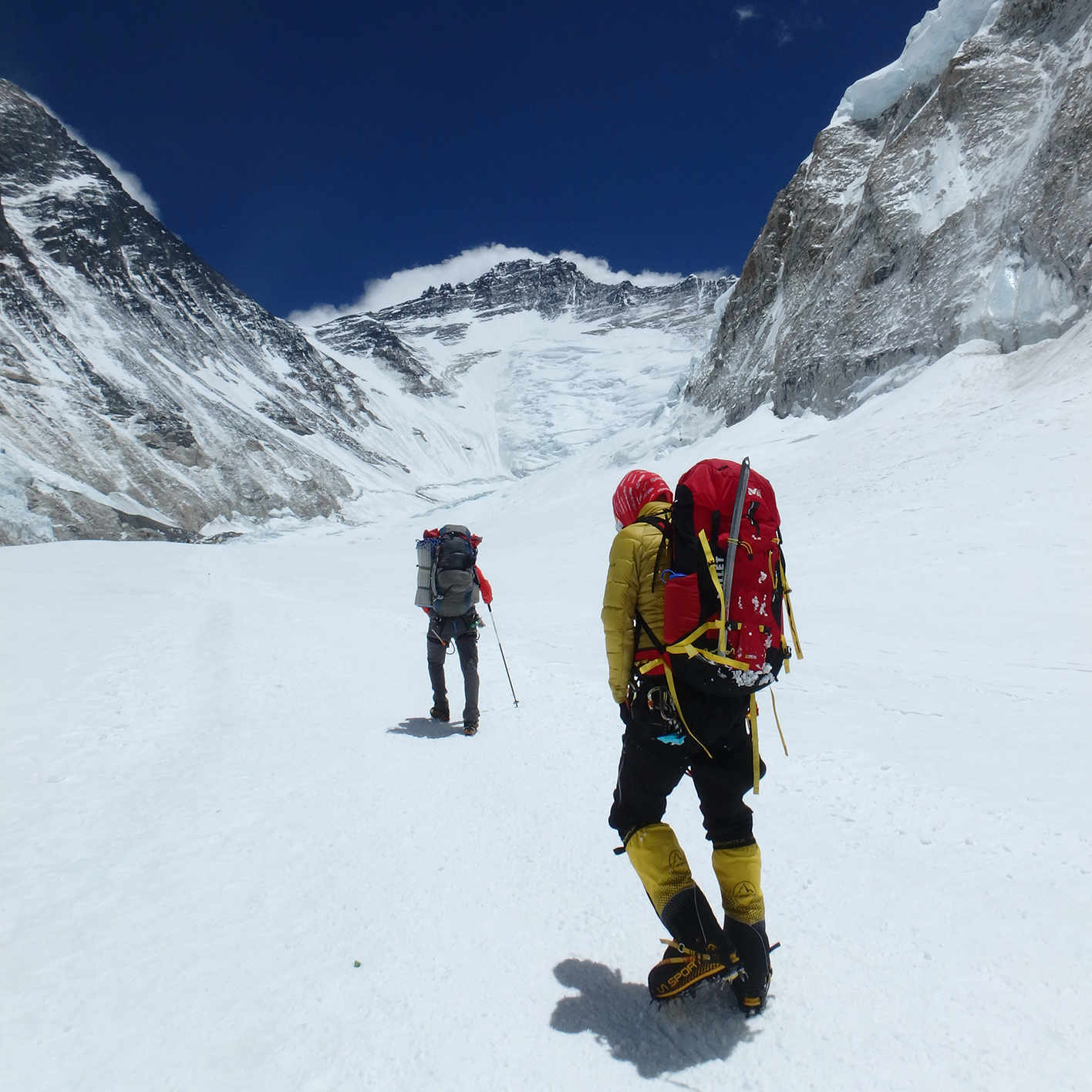8000m (vertical…), the new challenge for marathon runners

So, you are a marathon runner. Good, you are fit! Now, what about new challenges? You run “horizontally” 42.195 km, why don’t you try 8 km… vertical…
Climbing 8,000m summits in the Himalayas is the perfect next step for marathon runners. Challenge, endurance, mental strength, management of the effort over the distance are common characteristics of the two sports. Like finishing a marathon, reaching a high altitude summit is an extraordinary achievement requiring stamina and a lot of will.
Do you need to be a very experienced climber to ascent a 8,000 m peak?
Actually, not at all. 99% of expedition use the “fixed lines” technique where you pull on a rope to climb. No need for superior climbing technique. What is required is endurance and mental strength. Great, it is the two skills you need most as a marathon runner.
I saw that most people climb 8,000 m with oxygen? Isn’t it like climbing at sea level?
Not at all! The big issue in climbing a 8,000 m is the lack of air. At the top of Everest, you breath only one third of the air at sea level. One third! Try running a marathon with one third of your lung capacity… not the same story! Without additional oxygen, very very few climbers would have the capacity to reach the summit of a 8,000 m. In 2017, out of 649 people reaching the top of Everest, only 11 climbers had no additional oxygen. Moreover, the fatality rate is twice higher. To get back to the question, the effect of additional oxygen is equivalent to put you back 2,000 m below than your current real altitude, not a lot but it helps massively. The mask is used from 7,500 m. A climber would breathe around 40 / 45 % of the air at sea level with additional oxygen compared to 33% without.
What are the differences between running a marathon and climbing a 8,000m?
A marathon is definitely easier to organise for yourself than climbing a 8,000 m peak. However, far to be the elitist sport than some medias describe, the majority of climbers have the same socio-professional status as marathon runners and similarly, they are passionate and they manage to live their dream to get to the top of the highest mountains of the world. Two obvious differences are time and cost:
- Time – A marathon takes usually a week-end but it will take at least one month for an expedition on a 8,000 m and up to nearly 2 months for a summit like Everest. The climb itself takes 4 to 6 days but the period for acclimatization is quite long. The time for preparation is more or less the same between the two sports.
- Cost –A week-end abroad for a marathon will probably cost you around 500 EUR all included. The cheapest 8,000 m expedition (Manaslu) is priced above 20,000 € by reputable agencies. The reason is that an expedition requires a considerable infrastructure to set-up in a remote place, in general far from any road.
Another big difference is the risk, no?
Put aside the risk of extreme exhaustion common to the two sports, clearly, climbing a 8,000m is riskier than running a marathon. In an expedition, the use of fixed lines reduces significantly the risk of fall because the climber is always secured by this line. However, “objective” risks such as avalanches cannot be totally eliminated as well as sickness and exposure to high altitude. As a reference, the fatality ratio on Everest is 1.27 death for 100 climbers reaching the summit. However, a quite significant number of accidents is due to mistakes like not clipping to the fixed line. Another key element is the quality of the expedition agency supporting the climb and that makes a lot of difference for the safety. Like in any service, you can always find a cheaper price but on a mountain, your life is on the line. The low price expeditions save on the experience of Sherpas, quality of equipment and number of oxygen bottles. Our experience is that you REALLY do not want to have an issue with these above 8,000 m if you start having any trouble.
Interested? How to make it happen?
Before to run a marathon, you train on shorter distances such as semi-marathon. For climbing, the same approach applies. You need to “learn” how to manage the effort over the distance including hydrating yourself, eating and avoiding being in the “red”. A six-thousand meters peak is usually the first step with different degrees of difficulty in terms of progression. Building experience with one or two expeditions above 6,000m is a good way to make your first attempt to a 8,000m and why not, trying Everest at 8,841m, the top of the world!
How many 8,000 m peaks in the world?
There are fourteen 8,000 m all in the Himalayas, located in three countries: Nepal, China and Pakistan. So, you got the choice! Several peaks have a border between two countries just at the summit like Everest with Nepal and China. To date, only 40 climbers have succeeded in climbing all the fourteen 8,000 m peaks (including 19 climbers without supplemental oxygen). A more accessible challenge is the “Seven Summits” consisting in climbing the highest peak of each continent (obviously, Everest is included in the list),
© www.worldsherpas.com

